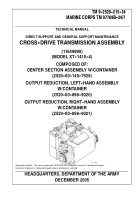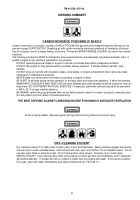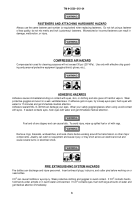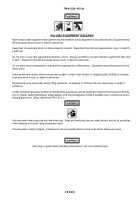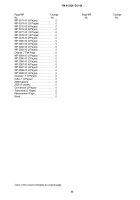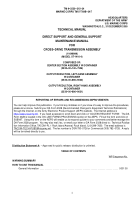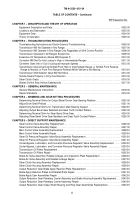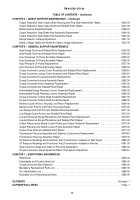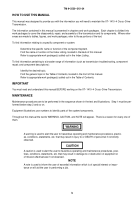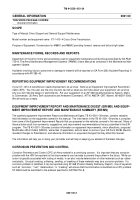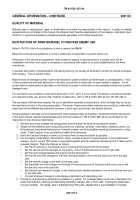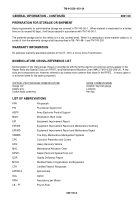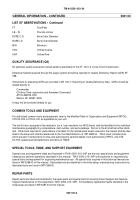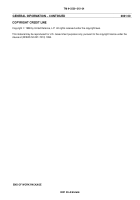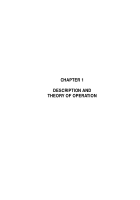TM-9-2520-215-34 - Page 3 of 508
TM 9--2520--215--34
a
WARNING SUMMARY
WARNING
CARBON MONOXIDE POISONING IS DEADLY
Carbon monoxide is a colorless, odorless, DEADLY POISONOUS gas and when breathed deprives the body of oxy-
gen and causes SUFFOCATION. Breathing air with carbon monoxide produces symptoms of headache, dizziness,
loss of muscular control, a sleepy feeling, and coma. Permanent BRAIN DAMAGE or DEATH can result from severe
exposure.
The following precautions MUST be followed to ensure personnel are safe whenever the personnel heater, main, or
auxiliary engine of any vehicle is operated for any purpose.
DO NOT operate personnel heater or engine of vehicle in enclosed area without adequate ventilation.
DO NOT idle engine for long periods without ventilator blower operation. If tactical situation permits, open
hatches.
DO NOT drive any vehicle with inspection plates, cover plates, or engine compartment doors removed unless
necessary for maintenance purposes.
NEVER sleep in a vehicle when the heater is operating or engine is idling.
BE ALERT at all times during vehicle operation for exhaust odors and exposure symptoms. If either are present,
IMMEDIATELY EVACUATE AND VENTILATE the area. Affected personnel treatment shall be: expose to fresh air;
keep warm; DO NOT PERMIT PHYSICAL EXERCISE; if necessary, administer artificial respiration as described
in FM 4--25.11 and get medical attention.
BE AWARE; neither the gas particulate filter unit nor field protection mask for nuclear--biological--chemical protec-
tion will protect you from carbon monoxide poisoning.
THE BEST DEFENSE AGAINST CARBON MONOXIDE POISONING IS ADEQUATE VENTILATION
WARNING
Cover is spring loaded. Depress against spring pressure during removal to prevent injury.
WARNING
DRY--CLEANING SOLVENT
Dry--cleaning solvent (P--D--680) used to clean parts is toxic and flammable. Wear protective goggles and gloves
and use only in a well--ventilated area. Avoid contact with skin, eyes, and clothes. Do not breathe vapors. Do not
use near open flame or excessive heat. Do not smoke when using solvent. Failure to do so could cause
SERIOUS INJURY. If you become dizzy while using cleaning solvent, get fresh air immediately, and if necessary,
get medical attention. If contact with skin or clothes is made, flush thoroughly with water. If the solvent contacts
your eyes, wash with water immediately, and obtain medical aid (ref. FM 4--25.11).
Back to Top

